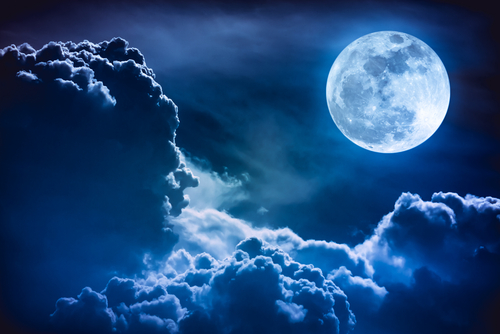Man in the Moon, for all the ages
Arrival of the Moon at its full phase April 29, will bring many admiring faces as people look up toward the “face of the ages” staring back. That’s the faithful face of the Man in the Moon, the fanciful depiction we see among the darker areas of the lunar surface forever aimed toward Earth.
Like a friend that comes to visit every month, all those with eyes to see since childhood have had the Moon seemingly looking back at them. We don’t have to look exactly or only on the date of Full Moon. For several days before and after, the Moon is nearly full. During the “gibbous” phase, which shapes the Moon somewhat like a football, most of the face is plainly seen.
While the Man in the Moon image may be the most popular, others have imagined a profile of a woman, and also a leaping rabbit. It’s not unlike finding various shapes in puffy cumulus clouds. Various cultures have imagined different things and had made various traditions surrounding lunar lore.
We don’t need a telescope or binoculars to see this. Since mankind first looked up on a clear moonlit night, the lunar face has been there. It has been only since Galileo Galilei first made telescopic studies of the Moon in 1609, that we have come to see there’s more than an imagined smiley face on Earth’s only natural satellite.
Astronomers at one time speculated that the broad dark plains on the Moon, which make up the “facial features” of the Man in the Moon, were oceans and seas. Thus, the dark areas were given names such as “Sea of Tranquility,” “Sea of Serenity” and “Ocean of Storms.” The term we use for these dark plains are “maria,” Latin for sea.
As lunar science progressed, we have learned that these areas are expanses of hardened lava from eons ago when asteroids were colliding with the Moon at a fierce rate.
Very interestingly, the far side of the Moon is almost devoid of maria. Imagine, only 27 human beings have ever seen the far side — the Apollo astronauts who orbited the Moon (12 landed) between 1968 and 1972. Unmanned spacecraft have mapped both sides in detail.
The Moon actually spins around; it rotates once for every revolution around the Earth, which keeps one side facing the planet at all times. Most moons in the Solar System do the same thing. We call this synchronous rotation. Mention that at your next social mixer.
Talk of the “Man in the Moon” may seem to be a pastime for children. Yet, are we not all children in understanding? The more we learn or think we have learned about the Universe, the more questions arise and the more opportunity we have to be humbled. Most of are not like robots and find fascination in only the cold calculations and theorems of this world and worlds beyond.
Whether we are a child first experiencing nature or a seasoned adult, are we still not inspired at the pure sight of a blossomed flower, a baby’s smile, a formation of geese, snow capped mountains, roaring waves or the stars overhead? I suggest that for all of us, novice or scientist, something as simple as the smiling “Man in the Moon” in the sky keeps drawing us back in wonder.
As we do so, we make a connection both with what first thrilled us as a youngster when some adult pointed out the Moon’s face; with our ancestors of thousands of years back and surely our descendants who after we are long gone, will still have the same Moon we too enjoyed.

